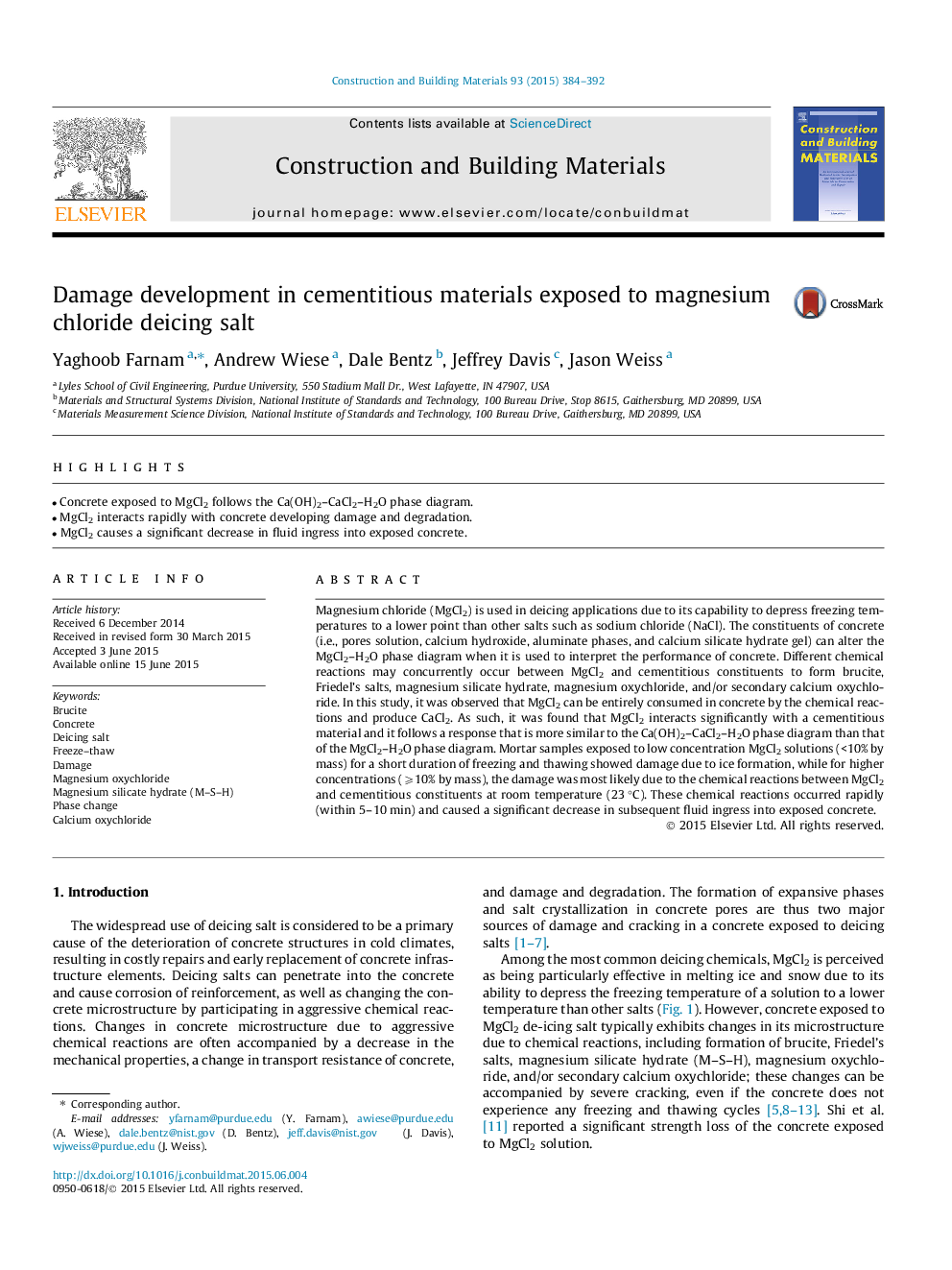| Article ID | Journal | Published Year | Pages | File Type |
|---|---|---|---|---|
| 6720409 | Construction and Building Materials | 2015 | 9 Pages |
Abstract
Magnesium chloride (MgCl2) is used in deicing applications due to its capability to depress freezing temperatures to a lower point than other salts such as sodium chloride (NaCl). The constituents of concrete (i.e., pores solution, calcium hydroxide, aluminate phases, and calcium silicate hydrate gel) can alter the MgCl2-H2O phase diagram when it is used to interpret the performance of concrete. Different chemical reactions may concurrently occur between MgCl2 and cementitious constituents to form brucite, Friedel's salts, magnesium silicate hydrate, magnesium oxychloride, and/or secondary calcium oxychloride. In this study, it was observed that MgCl2 can be entirely consumed in concrete by the chemical reactions and produce CaCl2. As such, it was found that MgCl2 interacts significantly with a cementitious material and it follows a response that is more similar to the Ca(OH)2-CaCl2-H2O phase diagram than that of the MgCl2-H2O phase diagram. Mortar samples exposed to low concentration MgCl2 solutions (<10% by mass) for a short duration of freezing and thawing showed damage due to ice formation, while for higher concentrations (⩾10% by mass), the damage was most likely due to the chemical reactions between MgCl2 and cementitious constituents at room temperature (23 °C). These chemical reactions occurred rapidly (within 5-10 min) and caused a significant decrease in subsequent fluid ingress into exposed concrete.
Keywords
Related Topics
Physical Sciences and Engineering
Engineering
Civil and Structural Engineering
Authors
Yaghoob Farnam, Andrew Wiese, Dale Bentz, Jeffrey Davis, Jason Weiss,
